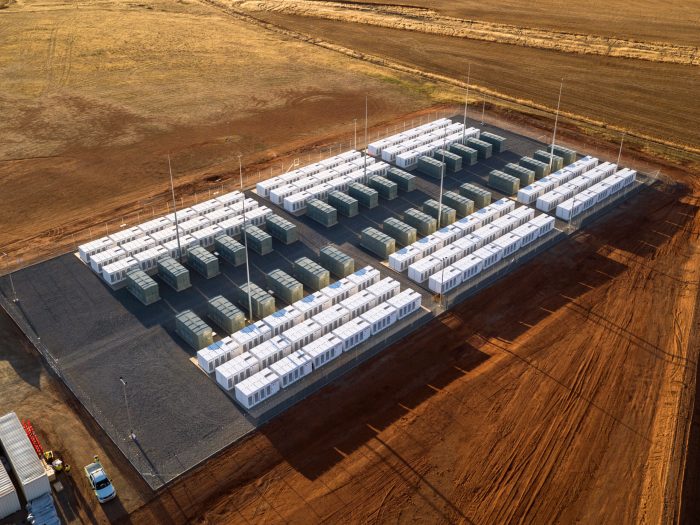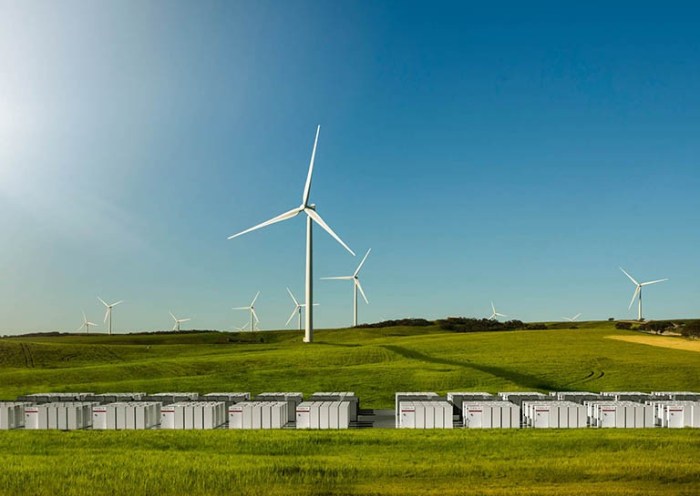The Project’s Background and Context
Tesla’s decision to build the world’s largest battery in South Australia was driven by a combination of factors, including the need to address the state’s energy challenges, showcase the potential of large-scale battery storage, and promote the adoption of renewable energy.
The project was a response to a major blackout that occurred in South Australia in September 2016, which highlighted the state’s vulnerability to power outages due to its heavy reliance on intermittent renewable energy sources. The blackout also raised concerns about the reliability of the state’s electricity grid and the need for more flexible and resilient energy storage solutions.
Challenges and Opportunities of Large-Scale Energy Storage Projects
Large-scale energy storage projects like Tesla’s battery in South Australia present both challenges and opportunities.
- Challenges: One of the main challenges associated with large-scale battery storage projects is the high initial cost of construction and installation. These projects also require significant land area and may face regulatory hurdles related to permitting and environmental impact assessments. Additionally, there are concerns about the long-term viability of battery storage technologies, particularly with regard to battery life and degradation over time.
- Opportunities: Despite the challenges, large-scale battery storage projects offer numerous opportunities to improve grid stability, enhance renewable energy integration, and reduce reliance on fossil fuels. Battery storage can help to balance the intermittency of renewable energy sources like solar and wind, providing a reliable and dispatchable source of power. It can also help to reduce peak demand and improve grid efficiency, leading to lower electricity prices for consumers.
South Australian Energy Landscape
South Australia has a long history of embracing renewable energy and has a high proportion of wind and solar power in its energy mix. However, the state’s reliance on intermittent renewable energy sources has made it vulnerable to power outages, particularly during periods of high demand or low wind and solar output. The state’s energy landscape has been shaped by its geographical location, its abundant renewable energy resources, and its commitment to achieving ambitious renewable energy targets.
- High Renewable Energy Penetration: South Australia has a high proportion of renewable energy in its energy mix, with wind and solar power accounting for a significant share of the state’s electricity generation. This high penetration of renewable energy has made the state a leader in the transition to a clean energy future. However, it has also highlighted the challenges of integrating intermittent renewable energy sources into the electricity grid.
- Energy Security Concerns: The state’s reliance on intermittent renewable energy sources has made it vulnerable to power outages, particularly during periods of high demand or low wind and solar output. The 2016 blackout highlighted the need for more flexible and resilient energy storage solutions to address these concerns.
The Battery’s Technical Specifications and Features
The Hornsdale Power Reserve, also known as the Tesla Big Battery, is a remarkable feat of engineering, showcasing the potential of large-scale battery storage in stabilizing energy grids. This battery boasts impressive technical specifications and features, playing a pivotal role in South Australia’s energy landscape.
Battery Capacity and Power Output
The battery’s capacity is a key factor in its ability to store and release energy. The Hornsdale Power Reserve has a storage capacity of 100 megawatt-hours (MWh), meaning it can store enough energy to power 30,000 homes for one hour. Its power output is equally impressive, reaching 100 megawatts (MW), allowing it to discharge the stored energy quickly, providing a rapid response to fluctuations in energy demand.
Battery Technology, Tesla built worlds biggest battery under 100 days
The battery utilizes a lithium-ion battery technology, a common choice for large-scale energy storage due to its high energy density, efficiency, and long lifespan. The battery consists of a network of battery modules, each containing individual battery cells. These cells are interconnected to form a larger system, capable of storing and releasing significant amounts of energy.
Integration with the South Australian Grid
The battery is seamlessly integrated with the South Australian grid, acting as a dynamic energy buffer. It can quickly respond to changes in energy demand, providing a reliable source of power during peak periods or when renewable energy sources, like solar and wind, experience fluctuations. The battery’s ability to stabilize the grid helps prevent blackouts and enhances the reliability of energy supply.
The Construction Process and Timeline
The construction of the world’s largest battery was a monumental undertaking, requiring meticulous planning, efficient execution, and a relentless focus on speed. Tesla’s ambitious goal of completing the project within 100 days presented numerous challenges, but the company’s innovative approach and unwavering commitment to excellence allowed them to achieve this remarkable feat.
The project was divided into distinct phases, each with its own set of challenges and milestones. These phases included design, procurement, and installation, all meticulously coordinated to ensure the project’s timely completion.
Design and Engineering
The design phase was crucial in laying the foundation for the battery’s success. Tesla’s engineers developed a comprehensive design that incorporated the latest advancements in battery technology, ensuring both efficiency and scalability. The design process involved extensive simulations and analysis to optimize the battery’s performance, ensuring it could meet the demands of the project.
Procurement
The procurement phase involved sourcing the necessary materials and equipment from various suppliers around the world. Tesla’s team worked tirelessly to establish efficient supply chains and ensure timely delivery of all required components. The company’s global network of suppliers played a critical role in meeting the project’s demanding timeline.
Installation
The installation phase involved assembling the battery’s numerous components, including the battery cells, inverters, and transformers. This phase required meticulous planning and coordination to ensure seamless integration of the various systems. Tesla’s team utilized innovative construction techniques and specialized equipment to accelerate the installation process.
Challenges and Solutions
The construction process faced several challenges, including:
- Logistical hurdles: The project’s vast scale and tight timeline presented significant logistical challenges, requiring efficient transportation and coordination of materials and equipment. Tesla addressed this challenge by optimizing logistics routes, leveraging specialized transportation solutions, and establishing a robust communication network.
- Technical complexities: The battery’s advanced technology and intricate design posed significant technical challenges. Tesla’s engineers overcame these challenges by collaborating with leading experts in battery technology, utilizing advanced simulation software, and implementing rigorous quality control measures.
- Weather conditions: Construction activities were subject to the vagaries of weather conditions, which could potentially delay the project. Tesla mitigated this risk by implementing flexible scheduling, utilizing weather-resistant materials, and employing experienced construction crews accustomed to working in various weather conditions.
Rapid Completion Within 100 Days
Tesla’s remarkable ability to complete the project within 100 days was a testament to the company’s commitment to innovation, efficiency, and collaboration. Several key factors contributed to this achievement:
- Modular design: The battery’s modular design allowed for rapid assembly and installation, as individual components could be easily assembled and interconnected.
- Pre-fabrication: Many of the battery’s components were pre-fabricated off-site, significantly reducing on-site construction time.
- Skilled workforce: Tesla assembled a highly skilled and experienced workforce, capable of working efficiently and effectively under tight deadlines.
- Advanced technology: The use of advanced construction techniques and equipment, such as robotic welders and automated assembly lines, helped accelerate the construction process.
- Strong leadership: Tesla’s strong leadership, with a clear vision and unwavering commitment to the project’s success, was instrumental in driving the project forward.
The Battery’s Impact on the South Australian Energy Market: Tesla Built Worlds Biggest Battery Under 100 Days
The world’s largest battery, built by Tesla in South Australia, has had a significant impact on the state’s energy market, demonstrating the potential of large-scale battery storage to enhance grid reliability, integrate renewable energy, and reduce reliance on fossil fuels. This battery has proven to be a game-changer for South Australia, transforming the state’s energy landscape.
Impact on Energy Prices
The battery’s presence has contributed to a reduction in energy prices in South Australia. During peak demand periods, the battery can discharge energy, helping to lower wholesale electricity prices. This, in turn, benefits consumers and businesses by reducing their energy costs. For example, in 2018, the battery helped to reduce wholesale electricity prices by up to 40% during a period of high demand.
Lessons Learned and Future Implications
The Tesla battery project in South Australia serves as a valuable case study for future large-scale energy storage initiatives. Its rapid deployment and successful integration into the grid have highlighted key lessons that can inform future projects. Furthermore, the project’s success has sparked interest in similar endeavors across the globe, paving the way for a more sustainable and resilient energy future.
The Significance of Collaboration and Partnerships
The success of the Tesla battery project was a result of strong collaboration between the South Australian government, Tesla, and other stakeholders. This collaborative approach facilitated swift decision-making, streamlined the construction process, and ensured the project’s alignment with local energy needs.
- The South Australian government’s commitment to renewable energy and its willingness to invest in innovative solutions were crucial factors.
- Tesla’s expertise in battery technology and its ability to deliver a project at scale were essential.
- The involvement of local contractors and businesses helped to create jobs and boost the regional economy.
This collaborative model can be replicated in future projects, ensuring efficient project execution and maximizing the benefits for all stakeholders.
Tesla built worlds biggest battery under 100 days – The success of the Tesla battery project has had a profound impact on the South Australian energy market, demonstrating the feasibility of large-scale energy storage and its ability to stabilize energy supply. The project has served as a blueprint for similar projects around the world, paving the way for a future where renewable energy sources are more reliable and accessible. As the world grapples with climate change and the need for sustainable energy solutions, the Tesla battery project stands as a beacon of hope, proving that innovation and determination can lead to a cleaner, more resilient energy future.
Remember when Tesla built the world’s biggest battery in under 100 days? Talk about a power move! It seems like ambitious deadlines are a theme in the tech world, like when the iPhone X was initially planned for a 2018 release, as you can read here. But hey, sometimes things take a little longer to perfect, and when they do, they usually end up being pretty awesome.
Just like that massive battery, the iPhone X turned out to be a game-changer, proving that even the most ambitious goals can be achieved with a little bit of hustle and innovation.
 Standi Techno News
Standi Techno News

